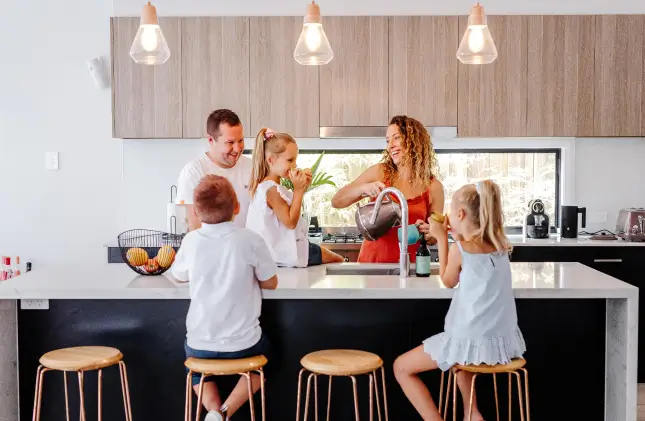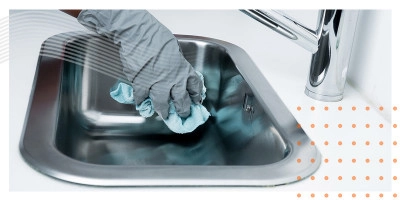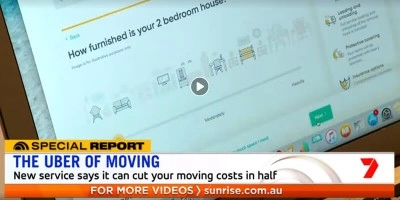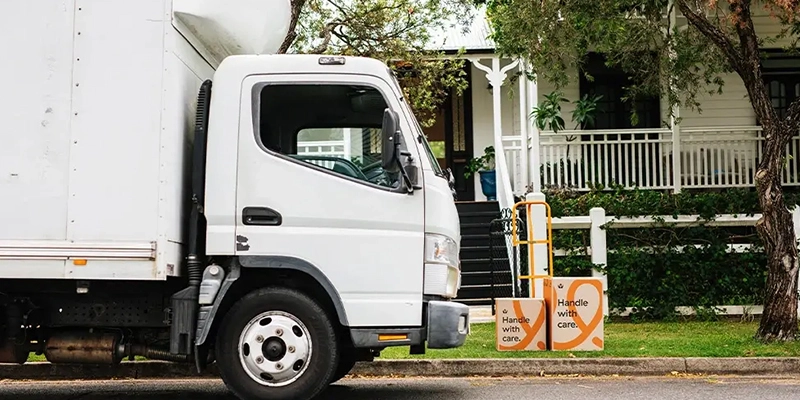
Ensure the lights turn on in your new home
With so many things to organise when you're moving house, it's easy to forget things like ensuring your power (electricity and gas) is connected in your new home and disconnected at your old house.
When you book your move with Muval, connections are one less thing you have to worry about. Our Connections Concierge service takes care of everything for you, so you can focus on more important things.
That means more time finding your new favourite cafe, and less time waiting on hold to your energy provider.
Connect your internet
They say you never really know a person until you see them cope with a poor internet connection. Don't risk it in your new home, let Muval's Connections Concierge get you set up with a high speed internet connection in your new home.
Our lives today are so dependent on the internet: from watching our favourite shows to doing the grocery shopping. When you're moving house, ensuring the internet is working at your destination might not be high on the priority list, but it won't be long before it's something you wish you'd organised sooner.
Let our Connections Concierge take care of your internet connection when you book your move.

We can help with every aspect of your move
After completing over 60,000 moves, we understand moving better than anyone.
From transferring your energy account & connecting your internet, to booking removalists, we can help.
Interstate removalists
Our best-in-class technology and customer service team will help to find you the best interstate removalist that has available capacity within your desired move dates.
Local removalists
A stress-free move starts with a quality removalist. Every removalist on our platform is verified through our 7-step quality assurance process so you know you're getting the best.
Relocation services
Your staff are your most important resource. We offer a streamlined approach to save money and time when organising staff / employee relocations.
Electricity & gas
Ensure the lights turn on and the hot water works when you move in. Our connections concierge service saves you waiting on hold and gets you connected quickly.
Removals cover
Muval Cover makes it easy to protect your treasured belongings to give you added peace of mind when moving. Just choose the items you want to cover and nominate their value.
Self-pack containers
We offer a range of self-pack container options for the budget conscious, or for those looking to take full control of how their belongings are loaded and unloaded.
Packing & unpacking
For those serious about saving time and stress, our packing and unpacking services are a must. All of your belongings professionally packed and unpacked to your benchtop.
Car transport
For longer-distance moves where driving to your destination is impractical, we can organise your vehicles to be transported and coordinated alongside your move.
Pet transport
When moving interstate your beloved pets must be transported with care to your new home. We work with quality pet care providers to help coordinate your pet's relocation.
Internet
They say you never really know a person until you see them cope with a bad internet connection. Don't risk it in your new home, we'll get you connected without the headaches.
Office moves
"Work from home" is changing how and where we work. Whether you're upsizing or downsizing, our service is ideal for your next office relocation.
Commercial
We offer "bulky" freight and logistics for commercial needs. Ideal for shipping items that are bigger than can be managed by a courier, but are unable to be loaded on palletes.
Our top tips and tricks for moving
Read our best tips and tricks on everything from saving money when moving to how to get your family organised.

Guide: Bond cleans & End of Lease Clean
Whether you are renting or selling you are typically obligated to complete a high standard of end of lease / bond clean before you vacate. Here's our tips on finding services to do this or taking it on yourself.

Moving to Perth
Located on the western coast of Australia, Perth (Australia's most isolated city) boasts stunning natural attractions, from its crystal-clear beaches and rugged coastline to its tranquil parks and gardens. If you are thinking about moving to Perth and are considering a city with a laid-back atmosphe...

Renovating your home when you move
Here are some ideas to improve the space you're in, for moving one way or the other!

Muval Featured on Channel 7's Sunrise
Muval was recently featured on Channel 7's Sunrise as a great way for Australians to save money when moving house. Dubbed 'the Uber of moving' - Shaun White presented how Muval can help slash the costs of moving.

How to Reserve Parking Spaces for Removalist Vans
Here are the quick links to parking permit information for Removalists across Melbourne, Sydney, Perth, Adelaide and Brisbane for tight street or city parking access.

Furniture donation Brisbane
Moving out is the best time to have a clean out. Donating your unwanted furniture, clothes or books can not only help those in need, but it can make moving cheaper and easier. Where can you donate in Brisbane? Furniture, clothes and more.